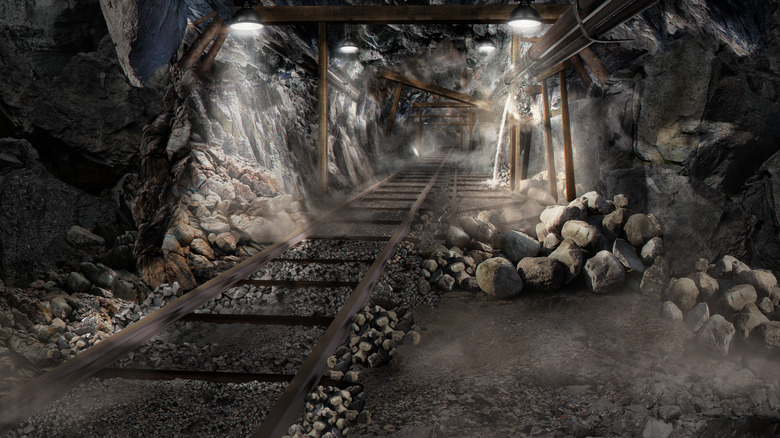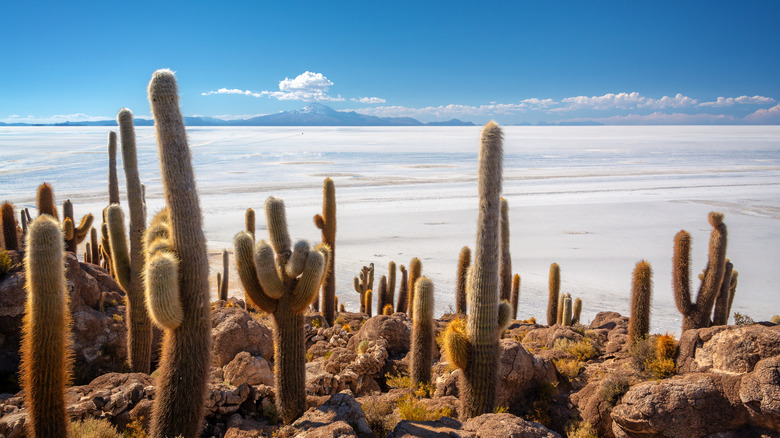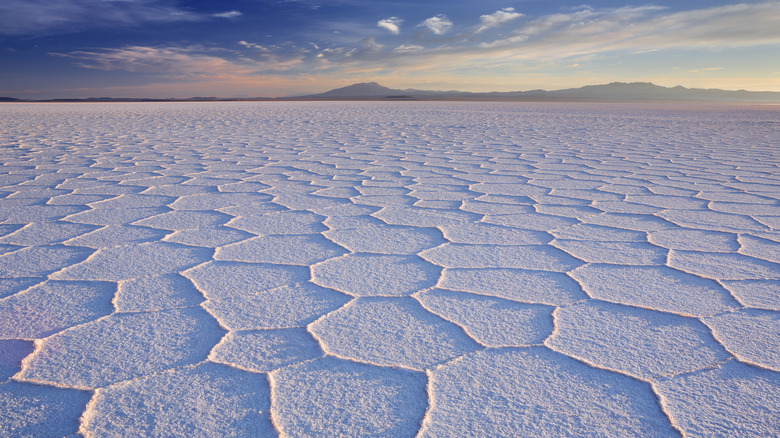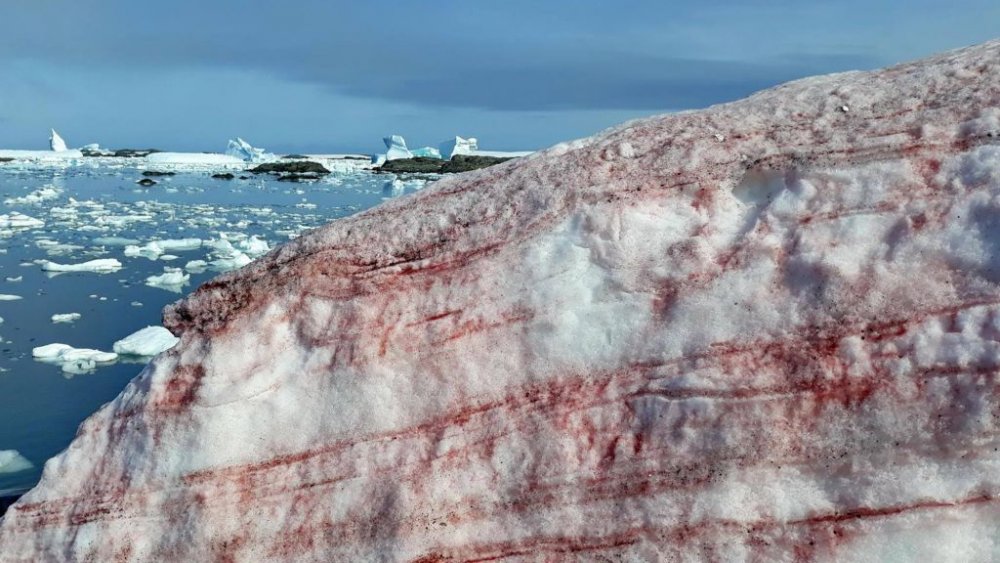
What You Might Not Know About Bolivia’s Sky Mirror
Few places in the world are as impressive as the Salar de Uyuni in Bolivia. Over 2 miles above sea level, the largest salt flat in the world has approximately 4,250 square miles, CNN reports. According to Netstate, this is nearly the same size as Connecticut. Given its massive size, it’s unsurprising that Neil Armstrong mistook the flat for an enormous glacier when he saw it from space, per CGTN.
Bolivia’s Sky Mirror was once a lake bed that dried up thousands of years ago, leaving a large extension of salt and other minerals, according to ThoughtCo. Nowadays, it attracts approximately 60,000 tourists every year, who often indulge in a three-day tour of the area. Curious visitors must make the journey via unpaved roads and sleep in hotels built entirely of salt after arriving at their destination.
Despite what you might imagine, the Salar de Uyuni landscape is an explosion of colors. There’s the Red Lagoon, with its pinkish waters and countless flamingos, as well as the Green Lagoon. Elsewhere, there are geysers and an island with giant cacti, BBC reports. It is easy to understand why people are so fascinated by the magnificent salt flats in this Bolivian natural wonder.
How Salar de Uyuni was formed
There are two explanations for how the Salar de Uyuni was formed. Current research suggests that 40,000 years ago, the region was covered by Lake Minchin, which was filled with water from the multiple mountains surrounding the area. As the water volume decreased amid a rise in temperatures, the giant Lake Minchin gave way to countless smaller prehistoric lakes. Over the years, the water slowly evaporated, leaving behind the impressive salt flats created by the high salinity levels in the water that lies beneath.
But people living in the Salar de Uyuni have a different explanation in the form of a wild myth. According to the book “The Rough Guide to Bolivia,” an old legend claims the mountains around the Salar were once giant people, and a love triangle was the catalyst for the salt flat. The legend claims that one of the giants was the goddess Yana Pollera, who had an affair with two volcanoes named Thunupa and Q’osqo. When Yana Pollera got pregnant, her lovers were enraged and started a war. The goddess decided to hide the baby far away to save its life. To assure her baby would survive, she flooded the area with milk, which eventually turned to salt and created Bolivia’s Sky Mirror.
The landscape changes over the year
One of the most impressive things about the Salar de Uyuni is how it changes during the year. Per National Geographic, the rains that batter the region between December and April give it a breathtaking mirror effect. According to Ripley’s, some refer to the flat as the “world’s largest mirror,” and it is no surprise it was featured in Time Magazine as one of its “World’s Greatest Places.”
The excessive amount of water can sometimes cause the cancellation of tours, especially in the colder months. But during the dry season, tourists are free to explore Salar areas that are not available when it’s raining. Most of the landscape is flat, which creates the appearance of an endless horizon — a perfect visual for pictures.
The Salar de Uyuni doesn’t attract only tourists, either: The region contains up to 70% of lithium reserves in the world. Although it can’t produce the material on a commercial scale yet (via France24), DW reports that international industries hope that this will change in the coming years.

Why Isaac Newton Once Stuck A Needle In His Eye

The Most Famous Curses In Royal History

The Truth About Muhammad Ali's Relationship With Malcolm X

The Untold Story Of The 1999 London Nail Bombings

Details You Should Know About Legendary Highwayman Dick Turpin

The Bob Marley Conspiracy Theory That Would Prove He Was Murdered By The CIA

The Truth About The Deadly Vaal Reefs Tragedy

The Untold Truth Of Eugene V. Debs

The True Details About Queen Elizabeth And Winston Churchill's Relationship

This Was Jean Harlow's Net Worth

























